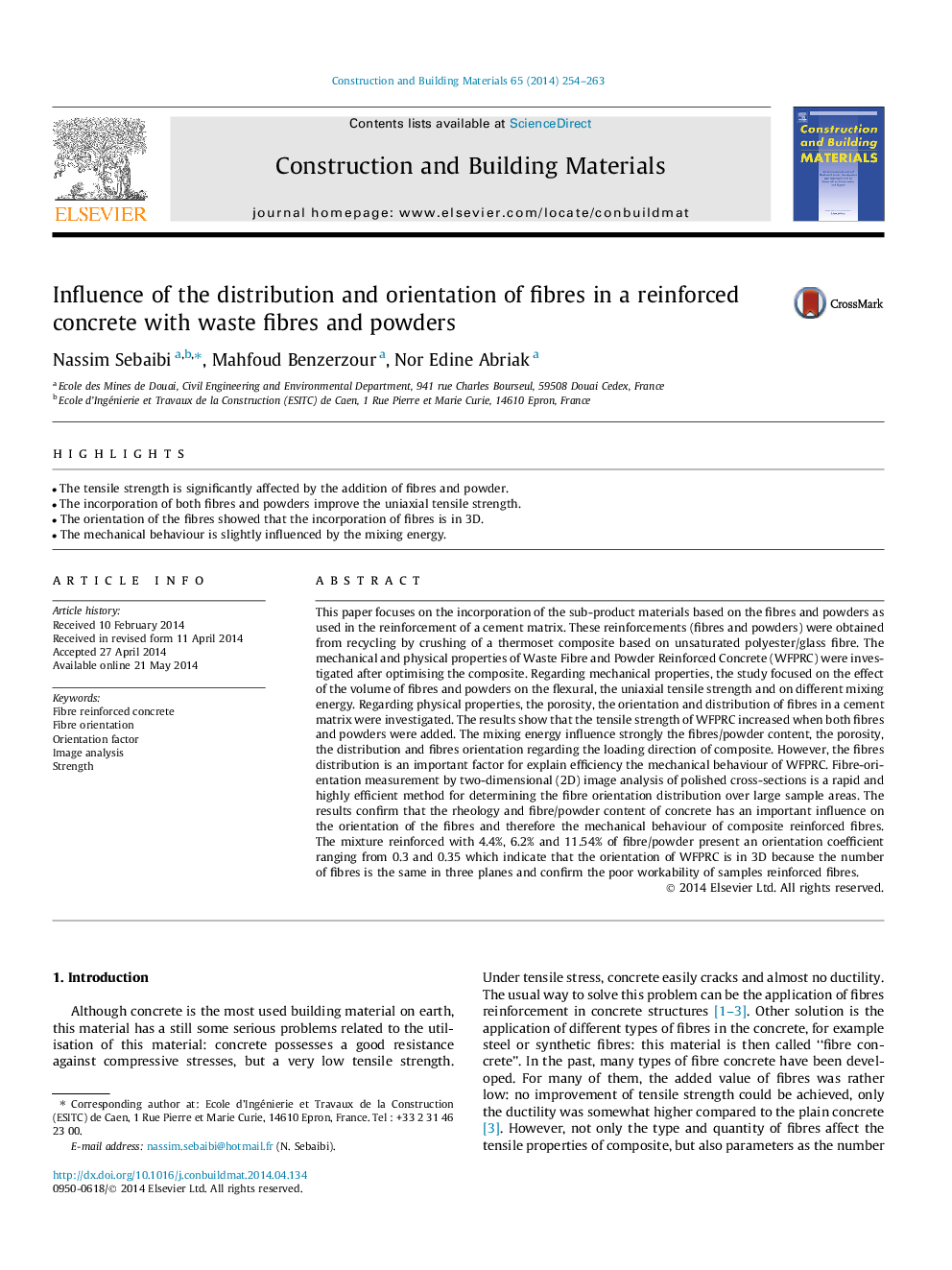| کد مقاله | کد نشریه | سال انتشار | مقاله انگلیسی | نسخه تمام متن |
|---|---|---|---|---|
| 257496 | 503591 | 2014 | 10 صفحه PDF | دانلود رایگان |
• The tensile strength is significantly affected by the addition of fibres and powder.
• The incorporation of both fibres and powders improve the uniaxial tensile strength.
• The orientation of the fibres showed that the incorporation of fibres is in 3D.
• The mechanical behaviour is slightly influenced by the mixing energy.
This paper focuses on the incorporation of the sub-product materials based on the fibres and powders as used in the reinforcement of a cement matrix. These reinforcements (fibres and powders) were obtained from recycling by crushing of a thermoset composite based on unsaturated polyester/glass fibre. The mechanical and physical properties of Waste Fibre and Powder Reinforced Concrete (WFPRC) were investigated after optimising the composite. Regarding mechanical properties, the study focused on the effect of the volume of fibres and powders on the flexural, the uniaxial tensile strength and on different mixing energy. Regarding physical properties, the porosity, the orientation and distribution of fibres in a cement matrix were investigated. The results show that the tensile strength of WFPRC increased when both fibres and powders were added. The mixing energy influence strongly the fibres/powder content, the porosity, the distribution and fibres orientation regarding the loading direction of composite. However, the fibres distribution is an important factor for explain efficiency the mechanical behaviour of WFPRC. Fibre-orientation measurement by two-dimensional (2D) image analysis of polished cross-sections is a rapid and highly efficient method for determining the fibre orientation distribution over large sample areas. The results confirm that the rheology and fibre/powder content of concrete has an important influence on the orientation of the fibres and therefore the mechanical behaviour of composite reinforced fibres. The mixture reinforced with 4.4%, 6.2% and 11.54% of fibre/powder present an orientation coefficient ranging from 0.3 and 0.35 which indicate that the orientation of WFPRC is in 3D because the number of fibres is the same in three planes and confirm the poor workability of samples reinforced fibres.
Journal: Construction and Building Materials - Volume 65, 29 August 2014, Pages 254–263
